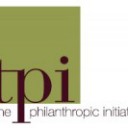Every donor takes a different strategic journey and, though many pass through similar stages, there are important factors that defy categorization by stage because they can be influential at so many different points in time. Whether you’re an advisor looking for the opportunity to catalyze a donor’s giving or a member of a family foundation searching for a way to get others into a more strategic mindset, these additional factors may help move some to the next step.
Role models are clearly important throughout the donor development process. It is very powerful when new donors are introduced to examples of people they admire and may identify with, who are highly strategic in their giving. Role models are helpful in different ways at each stage, by inspiring, guiding and making concrete the potential of strategic giving. Donors who attend workshops or are involved in peer networks consistently point to the inspirational value of hearing from donors who are putting strategic philanthropy to work.
Time and a safe space to explore one’s relationship to philanthropy are also important at each stage. A common trigger event will be retirement from business, providing the donor with time to invest in philanthropy, and also a compelling reason to rethink one’s life purpose. Safe spaces may come in many different forms – either in conversation with an advisor or a peer who brings up the right questions, or in the form of an identity group.
A champion or catalyst who nudges, inspires or guides the donor can be a very important factor contributing to a donor’s strategic development. Particularly among families, we have noticed the impact of one family member who takes on the task of challenging other family members to become more strategic. In some family foundations, the staff person may play this role, or the trusted advisor/consultant, artfully guiding the donor through the ropes of giving.
An increase in assets can be a triggering event to bring a donor or family giving enterprise to a more strategic giving level. When a company is sold, or an older generation passes away, the donor has to deal psychologically with a sense of greater scale and bigger stakes.
A generation transition can trigger a family giving enterprise to become more strategic. The introduction of new people into a giving enterprise provides an excuse and opportunity for the family to take the time and space to reconsider its goals, strategies and approaches. Whether the family does decide to become more strategic will depend on individual personalities, family dynamics and other influencers (consultants, peers and role models, etc.) that are involved. Many family foundations come to TPI at this stage and we seek to take this opportunity to inspire them to a more strategic level. Often the champion identified earlier is a member of the next generation.
A positive experience with giving is an important reinforcing influence on the donor, which encourages the donor to give more and to make philanthropy a more significant part of his/her life. For this reason, we believe that satisfaction and effectiveness will, in the long run, go hand in hand. The positive experience may come from: seeing the results from one’s gift, receiving appreciation for the gift, learning something significant from giving, or personal involvement with a grantee. Many donors we work with find the greatest satisfaction comes from hands-on, personal engagement with a gift – be it at the organizational support area, or as a mentor to a young person. As one very wise donor said, ‘this is not a spectator sport!’ Having at least one serious working relationship or ‘gold-star’ gift reminds donors of the potential for all their philanthropy.
Continuous learning and reflection, whether in structured or unstructured modalities, is critical to the ongoing development of a donor. Donors who develop networks of other donors – researchers or top-notch practitioners to support their learning – challenge their assumptions, and expose themselves to different approaches, are on the path to strategic giving. For many donors, it is helpful to participate in a structured philanthropic educational program, not only because of the exposure to the program’s substance, but because it provides time to reflect on what they are doing and to re-imagine the future. Some donors work with consultants on a periodic or ongoing coaching basis to enhance their learning. Foundations that take the time for retreats to rethink their goals and dreams are more likely to move quickly up the curve to strategic giving.
Ellen Remmer is CEO and president of The Philanthropic Initiative





Comments (1)